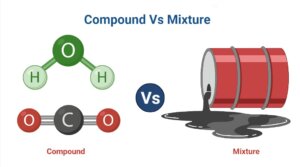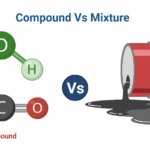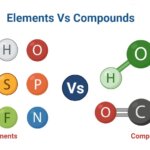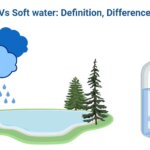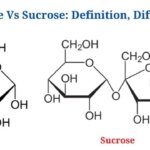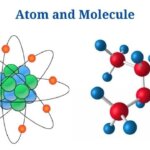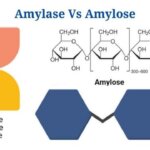Definition of a Compound
Compounds are substances made up of numerous identical molecules that are joined together by chemical bonds as well as contain two or more atoms from different elements.
- Ionic compounds are linked by ionic bonds, covalent compounds are linked by covalent bonds, intermetallic compounds are linked by metallic bonds, as well as complexes are bound together by coordinate covalent links.
- Physical as well as chemical properties of distinct compounds are determined by the type of atom-atom bonding as well as the characteristics of the elements present.
- A chemical compound can also be transformed to other chemical compounds through a chemical reaction with another component.
- In order to generate a new compound, chemical processes require the breaking of previous bonds as well as the formation of new ones.
- Molecules made up of atoms from the same element are not compounds; they are simply called molecules.
- Over 35000 chemical compounds have been registered for manufacturing as well as use around the world.
- The presence of two or more different types of atoms in a predetermined stoichiometric proportion defines chemical compounds. Regardless of the source or manner of preparation, the proportion remains constant.
- Chemical formulae are used to represent these compounds, as well as they contain information about the atoms that make up the compound as well as their quantities.
- Chemical compounds can have radically different physical as well as chemical properties than the elements that make them up.
- A compound’s atoms cannot be physically separated, necessitating the use of complicated chemical methods.
Definition of a Mixture
Mixtures are compounds made up of two or more separate components that are not chemically combined or change.
- The ingredients in a combination are physically blended, but their unique identities are preserved.
- Due to the lack of chemical bonding, chemical components present in mixtures can be elements or compounds with their own chemical properties.
- Depending on the contents of the combination, the mixture can be homogeneous or heterogeneous.
- Homogenous mixes are made up of two or more substances that have been blended in such a way that the constituents are invisible to the naked eye.
- Heterogeneous mixes are those in that the ingredients can be regarded as separate entities since they are only mechanically combined as well as do not alter chemically.
- The components of a mixture’s makeup are not fixed as well as can change based on the source as well as preparation method.
- Since a mixture’s components are merely physically joined, they can be separated using physical methods such as filtration.
- Suspensions, solutions, as well as colloids are the three types of mixtures that can be classified based on the size of the particles present in the mixture.
- Suspensions are heterogeneous mixtures that show the Tyndall effect. The particles are big enough that centrifugation as well as decantation can easily separate them.
- Solutions are mixes of nanoparticles with a diameter of less than 1 nm. Decantation or other simpler physical procedures will not be able to separate the particles.
- Colloids are mixes of particles with sizes ranging from 1 nm to 1 mm. The Tyndall effect can also be seen in colloid solutions, as well as the particles can be separated using decantation as well as centrifugation.
Key Differences between Compound and Mixture
(Compound and Mixture)
[ninja_tables id=”5663″]
Compound Examples
Water
- Water is a compound made up of two hydrogen atoms as well as one oxygen atom.
- The hydrogen-to-oxygen ratio in water is 2:1, as well as it remains constant inside the complex.
- Water has a feature that distinguishes it from hydrogen as well as oxygen in that it can exist in all solid, liquid, as well as gaseous phases, whereas the other components can only exist in the gaseous state.
- A covalent link exists between hydrogen as well as oxygen atoms, as well as distinct water molecules can have intermolecular as well as intramolecular hydrogen bonds.
- Physical separation of the hydrogen as well as oxygen in a water molecule is impossible.
- Water covers over 70% of the Earth’s surface as well as serves a variety of functions for all living organisms.
- In the compound, the components of water do not have independent identities. The molecules are dispersed evenly throughout the complex.
Mixture Examples
Crude Oil
- Crude oil, commonly known as petroleum, is a naturally occurring liquid made up of a variety of petroleum compounds that can be refined into several types of fuels.
- The components of petroleum are primarily hydrocarbons of differing molecular weights that are mechanically blended together.
- Crude oil can be recovered in a variety of ways from geological formations under the Earth’s surface.
- Different methods, such as fractional distillation, can be used to separate petroleum products mixed in petroleum.
- Crude oil contains natural gas dissolved in it, that can disperse into the air when recovered from the ground.
- Alkanes, cycloalkanes, as well as organic molecules containing nitrogen, oxygen, as well as sulfur are among the hydrocarbons found in crude oil.
Compound and Mixture Citations
- Gautum SD, Pant M and Adhikari NR (2016). Comprehensive Chemistry, Part 2. Sixth Edition. Heritage Publishers and Distributors Pvt. Ltd
- https://biodifferences.com/difference-between-mixtures-and-compounds.html
- https://www.fkit.unizg.hr/_download/repository/PRPP_2013_Crude_oil_composition.pdf
- https://www.tutorialspoint.com/chemistry_part1/chemistry_atoms_and_molecules.htm
- https://www.difference.wiki/homogeneous-mixture-vs-heterogeneous-mixture/
- https://www.cbsetuts.com/ncert-class-9-science-lab-manual-solution-colloids-suspension/
- https://study.com/academy/answer/what-are-the-components-of-mixture.html
- https://quizlet.com/474153250/compounds-flash-cards/
- https://www.britannica.com/science/chemical-compound
- https://socratic.org/questions/what-is-the-process-used-to-separate-petroleum-into-different-fractions
- https://scilearn.sydney.edu.au/fychemistry/bridging_course/handbook/11BCTOPIC1.pdf
Related Posts
- Dissecting Microscope (Stereo Microscope) Definition, Principle, Uses, Parts
- Saturated vs Unsaturated Hydrocarbons: Definition, Differences, Examples
- Ethanol Vs Methanol: Definition and 10+ Differences
- Hydrogen Bond: Properties, Definition, Types, Examples
- Nitrate Vs Nitrite: Definition, Differences, Examples
- Aromatic Compounds vs Aliphatic Compounds: Definition, Differences, Examples
- Compound Vs Mixture: Definition, Differences, Examples
- Elements Vs Compounds: Definition, Differences, Examples
- Molecules Vs Compounds: Definition, Differences, Examples
- Hard water Vs Soft water: Definition, Differences, Examples
- Glucose Vs Sucrose: Definition and Key Differences
- 13+ Difference Between Atom and Molecule with Examples
- How to Balance Chemical Equation: Methods, Steps, Examples
- Ionic Bond: Definition, Properties, Examples
- Amylase Vs Amylose: Definition, Differences, Example

